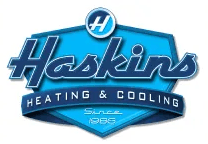Businesses rely heavily on their HVAC systems to maintain a comfortable environment for both employees and customers. A commercial HVAC system is a complex machine, consisting of several key components that work together to heat, cool, and ventilate a building. Understanding these components is essential for efficient operation and maintenance. Learn more about the critical parts of a commercial HVAC system in this post.

Compressor
The compressor is often referred to as the heart of an HVAC system. Located outside, it plays a crucial role in circulating refrigerant between the evaporator and condenser coils. The compressor’s job is to change the state of the refrigerant, enabling it to absorb heat from the interior and release it outside. Regular maintenance is vital to avoid costly replacement and ensure the compressor’s longevity.
Thermostat
Serving as the command center, the thermostat regulates the HVAC’s functionalities based on temperature settings. It sends signals to activate heating or cooling systems to maintain the desired indoor climate. Commercial buildings often have multiple thermostats controlling different zones for customized temperature management.
Air Conditioner
The air conditioner’s main function is to remove heat from indoor air and transfer it outside, leaving behind cooled and dehumidified air. This process is facilitated by the refrigerant, which absorbs indoor heat and ejects it externally. However, the efficiency of air conditioning depends on the harmonious operation of all HVAC components.
Condenser
Located outdoors, the condenser is crucial for heat exchange, transferring heat from the building to the outside air. As the refrigerant releases heat to the outdoor air, it transforms back into a liquid state, ready to absorb more indoor heat.
Expansion Valve
The expansion valve plays a critical role in regulating refrigerant flow into the evaporator coils. By reducing the refrigerant’s pressure, it facilitates its transition from liquid to vapor, thereby allowing it to absorb heat efficiently.
Air Handler and Blower
The air handler, often housing the blower and evaporator coils, is responsible for moving air through the system. It takes in warm air, cools it, and then recirculates the cooled air back into the building. Regular maintenance of the air handler ensures clean and efficient air circulation.
Filters and Terminal Units
Filters within the HVAC system are vital for removing contaminants like dust, dirt, and pollen from the air. Terminal units, which may consist of a filter, coils, and a blower, control the volume of conditioned air entering different building areas. Keeping filters clean is essential for maintaining air quality and system efficiency.
Additional Components for Optimized Performance
- Chillers: Employed in larger buildings, chillers help remove heat from liquid via air or water-cooling processes, crucial for sustained cooling requirements.
- Furnace: This works in conjunction with the thermostat to warm air and distribute it throughout the building via ductwork.
- Ductwork: This network of ducts is responsible for carrying conditioned air throughout the building and returning unconditioned air back to the system.
Haskins Heating & Cooling provides maintenance and repair services to ensure your commercial HVAC system’s efficiency and longevity. Call us at (615) 746-6390 or fill out our contact form to schedule a consultation. We serve clients in Joelton, TN, and surrounding areas.
